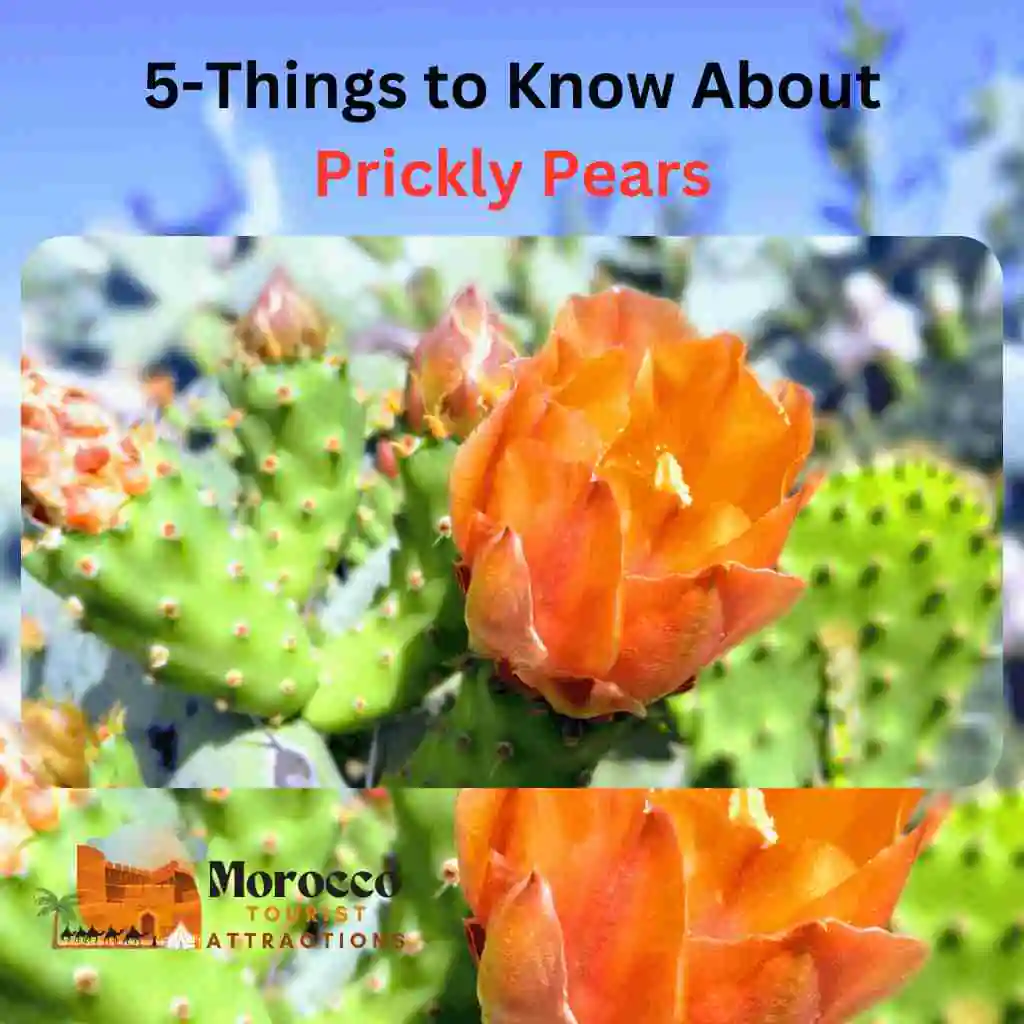
5-Things You Should Know About Prickly Pears:
Prickly pears are a fruit that Moroccans both adore and detest! Its spiky exterior and the fact that it is a cacti plant’s fruit give it an apt name. During your Moroccan road trip, you will see an impressive number of these prickly pear cacti almost everywhere if you look out the window.
Despite what its name in Moroccan Arabic, l’hindia (the Indian Fig), suggests, the prickly pear traveled all the way from Mexico to Morocco in the 1770s. Today, it is thriving throughout North Africa and is ingrained in people’s daily lives.
Sadly, the cochineal beetle recently destroyed the plant in some parts of Morocco by tunneling inside, leaving behind some sad and wilting cacti. Farmers have suffered financial losses as a result, and consumer prices have gone up!
Prickly pears are both loved and despised by Moroccans
The prickly pear season starts at the beginning of July. There are now street vendors in every region of the nation, in every town and city, and even on the sides of freeways and major highways! The prickly pear is peeled and sold for about one dirham per piece.
Most people consume their spiky find immediately, but some take it home and store it in the refrigerator for later. Its pulp can be used to make jams and spreads, but these products will lack the seeds, which are responsible for half of the fruit’s nutritional content.
Like all wonderful things, prickly pears are best enjoyed in moderation. Depending on your digestive system, eating more than two or three of them may cause you to become constipated for days, or the exact opposite issue. Yes, there is love and hate.
The Incredible Health Benefits of the Prickly Pear
5-Things You Should Know About Prickly Pears: A large portion of the prickly pear is used to make pharmaceuticals and treatments. Its seed oil is thought to treat cancer, type 2 diabetes, and high blood pressure. It has antiviral, antibacterial, and antioxidant properties, soothes ulcers, lowers cholesterol, and combats obesity.
Remember our warning from earlier: eating a lot of prickly pears won’t completely heal you; however, the oil they contain may be beneficial to your health and act as a catalyst for change in the way your body heals.
This precious oil is so expensive because it takes a ton of prickly pears to make just one liter of it! You could expect to pay around 10,000 dirhams (about $900) for a liter of pure oil.
The high concentration of vitamins E, A, and C, Omega 6 fatty acids, and magnesium in superfruits are primarily responsible for their therapeutic and cosmetic benefits.
The Prickly Pear of Cosmetics
This oil is considered a luxurious organic skin care treatment when used in a routine or beauty care regimen, especially when considering the price! The prickly pear seed oil has proven to be very effective in halting the age-old battle against the signs of aging skin.
Additionally, it is utilized for nourishing, mending, and healing the skin, hair, and nails. Omega 6 and Vitamin E, which are highly prized ingredients in organic cosmetics, are abundant in them.
In the driest parts of Morocco, Berber women have been using this oil for centuries, and many of them credit it for their flawless skin despite years of sun, heat, and labor-intensive work.
The Prickly Pear Feeds Livestock
When other plants and nutrients are scarce, it is possible to feed animals with the inner flesh of cactus leaves because it is inexpensive and typically simple to locate.
Although it is not particularly high in protein, it is very hydrating, which is very advantageous given that dehydration is a significant factor in livestock deaths during particularly dry summers.
When a donkey chooses to eat a prickly pear plant, at least from the donkey’s perspective, the flavor must be preferable to the pain of the thorn!
The Industry of Prickly Pears Empowers Women
Many women in various regions of Morocco have turned the laborious and demanding process of removing the seeds from the fruits into a business.
These women, who are mostly from underprivileged rural areas, have discovered a useful financial ally in the prickly pear despite having no income. On average, these women receive $4 for each kilogram of seeds they gather.
Although this may not seem like much, many rural Moroccan women depend on it greatly in order to support their families or achieve some level of financial independence.
Therefore, you can respond, “Maybe not… but it kind of grows on cacti,” the next time someone tells you that money doesn’t grow on trees. At least it does for these devoted Moroccan women.